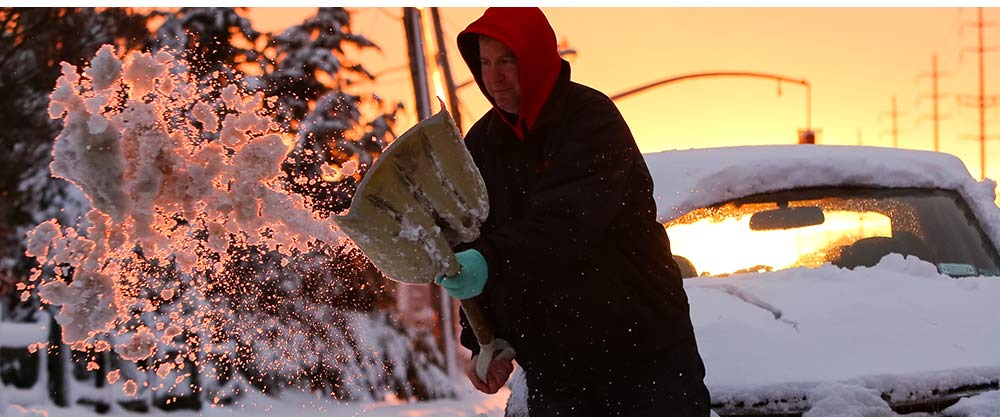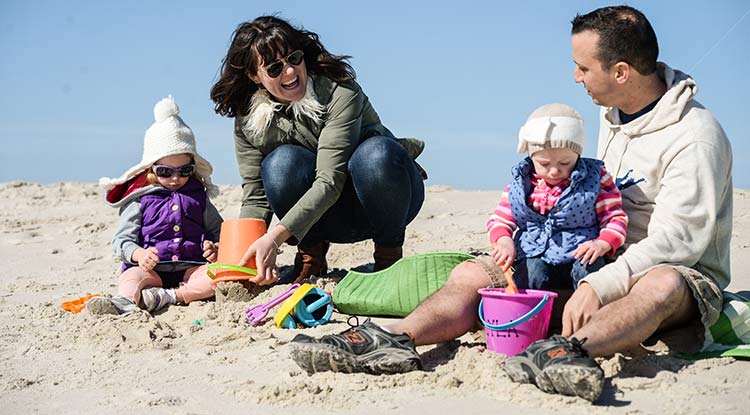Mild Winter, But Beware The Ice of March

Yes, Long Islanders woke up Wednesday to icy roads and wind chill in the single digits after a windy, sleety storm Tuesday.
And, yes, March so far has been a good deal colder than usual for this time of year.
Still, isn’t that all the more reason to marvel at the three preceding months? Overall, this past winter was “a very easy” one, said Bill Korbel, News 12 Long Island meteorologist.
(And, no, he doesn’t have his dates wrong. For those in the meteorological community, the demarcation for winter is nice and neat – from Dec. 1 through the last day of February.)
Winter of 2016-2017 saw an average temperature close to 4 degrees above normal, Korbel said, though there was “above normal snowfall, believe it or not.”
In all, just less than 32 inches of snow fell at Long Island MacArthur Airport, where the Island’s official weather records are kept, with “all but a few inches” arriving with two major storms.
How mild was it?
The average for the season was 36.9 degrees, which is 3.9 degrees above normal. This winter was fifth warmest at Long Island MacArthur Airport, where records have been kept since 1984.
DECEMBER
 36.6°
36.6°
Average temperature — 1° above monthly norm
JANUARY
 36.2°
36.2°
Average temperature — 5.6° above monthly norm
FEBRUARY
 37.8°
37.8°
Average temperature — 5° above monthly norm
60-degree days in winter
There were 5 days with highs of 60 degrees or above at the airport, though that pales in comparison to 12 days last winter.
Feb. 19 and 25 saw the highest temperature all winter: 65 degrees. Meteorologist Korbel, on Feb. 19, “celebrated by hitting golf balls at Eisenhower park,” where “the driving range was very crowded.”

Irene and Greg Simone of Mineola brought daughters Lyla, 3, and Hanna, 1, to Jones Beach as temperatures reached the 60s on Feb. 24. Photo by Steve Pfost.
What a difference a day made
Feb. 8: A high of 62 degrees
With high temperatures near 60 degrees, Ginny Montaperto of Farmingdale basked in the sun with her dog Charlie on a bench at Belmont Lake State Park in West Babylon on Feb. 8. Twenty-four hours later, snow blanketed the same spot.

Photos by Barry Sloan.
Feb. 9: A full-blown blizzard
The blizzard that came after one of the winter’s warmest days packed a lot of punch. Long Island saw snow totals from 12 to 16 inches, and snow fell at rates of 1 to 3 inches an hour, and up to 4 inches per hour in some spots.

Andy Martinez of Brentwood helps push a taxi out of snow on Motor Parkway in Central Islip on Feb. 9. Photo by James Carbone.
MacArthur Airport reported 14.3 inches of snow, sustained winds of 38 mph and peak gusts of 48 mph.
One added attraction of this storm: thundersnow!
This is what thundersnow sounds like https://t.co/ivC7jtVCkI pic.twitter.com/D0M9HRT8Hr
— CNN (@CNN) February 10, 2017
Great loop by Neil Stuart from @NWSAlbany showing yesterday's Nor'easter #Niko and all the #thundersnow observations (lightning strikes) pic.twitter.com/Cc9zZEwXTr
— Michael Ventrice (@MJVentrice) February 10, 2017
How this year stacks up
The data stretch that goes back the furthest for monthly snowfall on Long Island is that recorded at Brookhaven National Laboratory, going back to 1947. Here are the highlights for the entire snow season, from October through April.
 4.5 inches
4.5 inches
Record low at BNL, 1997-98
 42 inches
42 inches
Snowfall total so far this winter
 90.75 inches
90.75 inches
Record high at BNL, 1995-96
Long Island didn’t escape the cold entirely
Though the overall average temperature for this winter was above normal, there were still some chilly days.
The lowest temperature was 4 degrees on Jan. 9. There were 7 days with with highs at or below freezing, compared to the norm of 16.9 days.
There were 60 days with lows at or below freezing, lower than the typical 68.4 days.

Blake Festinger, 6, takes a ride at Kalers Pond in Center Moriches on Jan. 8. Photo by John Roca.
What does it mean for spring?
Long Islanders who are allergy sufferers should take note of a potential downside of above-normal temperatures: the earlier arrival of pollen. Earlier warmth translates to an earlier start to the growing season — which means the earlier appearance of the allergy sufferer’s nemesis.
But it’s hard to make a precise call on pollen timing. Indeed, tree “budbreak” can be influenced by many factors, said Alice Raimondo, with the horticulture diagnostic lab at Cornell Cooperative Extension of Suffolk County. They could include tree health and age, soil moisture and air and soil temperatures, she said.
So, this mid-March splash of sleet and stretch of freezing days could mean somewhat of a reprieve.
Sources: National Weather Service, Upton office; Northeast Regional Climate Center
